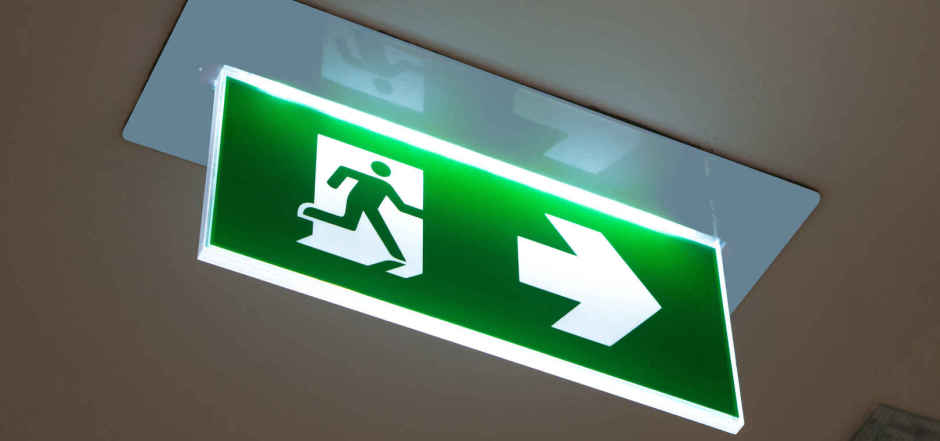
Emergency Lighting
Emergency lighting is lighting for an emergency situation when the main power supply is cut and any normal illumination fails. The loss of mains electricity could be the result of a fire or a power cut and the normal lighting supplies fail. This may lead to sudden darkness and a possible danger to the occupants, either through physical danger or panic.
Emergency lighting is normally required to operate fully automatically and give illumination of a sufficiently high level to enable all occupants to evacuate the premises safely. Most new buildings now have emergency lighting installed during construction; the design and type of equipment being specified by the architect in accordance with current Building Regulations and any local authority requirements.
The British Standard provides the emergency lighting designer with clear guidelines to work to. BS 5266-1: 2011 embraces residential hotels, clubs, hospitals, nursing homes, schools and colleges, licensed premises, offices, museums, shops, multi-storey dwellings, etc. Although this standard recommends the types and durations of emergency lighting systems relating to each category of premises, it should be remembered that the standards are the minimum safe standards for these types of building and that a higher standard may be required for a particular installation.
What is emergency lighting?
Lighting that automatically comes on when the power supply to the normal lighting provision fails.
Emergency lighting is a general term and is sub-divided into emergency escape lighting and standby lighting.
Emergency escape lighting – that part of an emergency lighting system that provides illumination for the safety of people leaving a location or attempting to terminate a potentially dangerous process beforehand. It is part of the fire safety provision of a building and a requirement of The Regulatory Reform (Fire Safety) Order 2005.
Standby lighting– that part of an emergency lighting system provided to enable normal activities to continue substantially unchanged. This guide does not include standby lighting as it is not a legal requirement and is a facility that may or may not be needed, depending on the use and occupancy of the premises, etc.
Emergency escape lighting is itself sub-divided into escape route lighting, open area lighting and high risk task area lighting.
Escape route lighting – that part of an emergency escape lighting system provided to ensure that the means of escape can be effectively identified and safely used by occupants of the building.
We at Preston Fire and security can maintain your current system and also advise on the lastest regulations.

